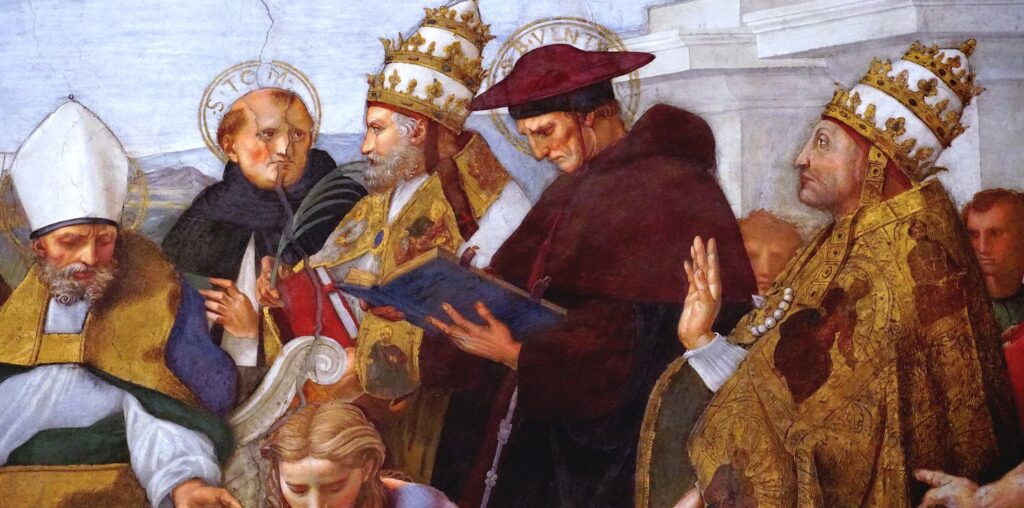
(ANALYSIS) Some years ago, I was rushing past the treasures of the Louvre in Paris, on the way to the “Mona Lisa,” when a painting stopped me in my tracks.
Massive and unusually elongated, “The Triumph of St. Thomas Aquinas” depicts the 13th-century saint throned in a golden sun, with Aristotle and Plato standing reverently on either side. The Renaissance artist Benozzo Gozzoli paints Christ and the writers of the Gospels looking down at Aquinas approvingly.
But who is the turbaned figure under Aquinas’ feet, crushed by his frankly famous weight and crawling away in defeat? That would be the 12th-century Muslim philosopher Ibn Rushd, or Averroes, as he became known in Latin Europe.
“Oh no,” I said out loud.
Us vs. them
As a Catholic philosopher and avid student of Aquinas, I am always fielding questions about whether this medieval saint is “still worth” reading today, nearly 800 years after his birth.
Aquinas is a giant of Western philosophy and theology, and for good reason. His writing is clear, well organized, free from bombast – ideas shine through his words. Famously, he insisted that faith and reason are in harmonious partnership, integrating the known science, philosophy and theology of his day into a comprehensive, interconnected system. All this helps explain why his work has maintained an enduring appeal, even as equally brilliant medieval thinkers have sunk into oblivion.
But Aquinas’ devotees have often used his ideas as blunt instruments, wielding the weight of his words against their own foes – giving him a reputation as a Catholic battle-ax.
There is a story that Aquinas was once dining with King Louis IX of France. Suddenly, the saint slammed his massive fist on a table, making the cups rattle. “That settles the Manichees!” he exclaimed, referring to an ancient religious sect.
His thoughts wandering, Aquinas had come up with a rebuttal against the Manichees’ belief that physical matter was evil – a view Aquinas fundamentally opposed, given his deep convictions about the goodness of all creation.
His followers have a history of attempting the same: thumping Aquinas’ writings down on the table to smite their enemies.
That’s the spirit Gozzoli and other painters channeled in their own times, painting Aquinas as a defeater of Muslim philosophy. They worked in the 15th century, as tensions between Christian and Muslim kingdoms were boiling over into war, from Spain and Italy to Constantinople.
Similarly, in the 19th century, Catholic seminaries and universities elevated Aquinas’ teachings to beat back threatening ideas from modern philosophy – like the claim that all reality is material and that all truths can be deduced through reason alone.
In our own age, that kind of “us or them” dynamic is easy to recognize. Addicted to outrage endlessly amplified by social media, we are all too eager to cheer on champions who can “settle” our foes for us. We thrive on the public takedown, the snide meme, the clever quip from our political heroes, regardless of whether what they say is true.
Yet that dynamic leaves a bad taste. Aquinas’ dominance of Catholic theology collapsed in the 1960s. Today, many scholars of medieval philosophy sideline Aquinas, arguing that he has already had enough attention.

